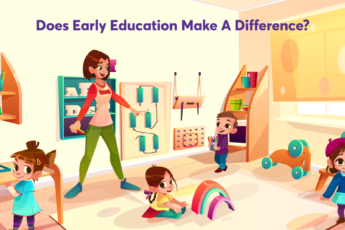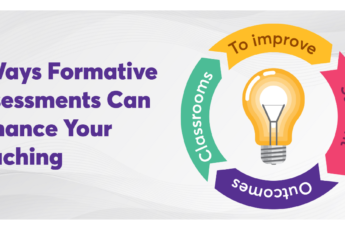The Importance of Gamification in Education

Gamification of education is a relatively new concept, and it is gaining popularity rapidly. It is based on the idea that people are inherently competitive, so people will be more likely to participate in a learning experience or work task by using game elements. For example, suppose you want your students to practice their multiplication tables instead of assigning them flashcards or telling them to practice repeatedly until they get it right. In such cases, you can create a game where they get points for correctly multiplying two numbers together. This makes learning more fun for students. They will be more motivated to learn how to multiply numbers because they want to win!
Aditya Shanbhag, Lead Game Designer at Square Panda India, believes that “Gamification works best when closely aligned with the curriculum being taught. It should be used to supplement lessons rather than replace them entirely. Gamified learning is not just about adding points and badges. It’s about creating a framework around the learning experience that incentivizes students to persist with their effort and complete their goals.”
A report shows that the game-based learning market is expected to grow from $11 billion in 2021 to $29.7 billion by 2026, at a 21.9% CAGR. Gamification is a new approach to learning that leverages the skills of game design, psychology, and technology to create an experience that’s engaging, adaptive, and immersive. Here’s why schools and colleges should adopt gamified learning.
🕹️ Improved Student Engagement
Some students are intrinsically motivated, while others need a nudge. By offering ‘rewards’ for their efforts, game-based learning can significantly impact learner engagement. And because these achievements are connected to positive experiences, children can also commit them to their long-term memory. Gamifying the classroom gives students something to do while also keeping them interested in what’s happening around them. When students have more opportunities for engagement, they’re more likely to participate and stay engaged throughout the lesson or activity. This will lead to better attendance rates, more student participation, and less time spent trying to get everyone back on track after an interruption.
🕹️ Informative Learning
Gamification can also teach students about different subjects by using a game-like interface that is easy to understand and use. For example, students can learn how different countries work through an online game with a virtual world where they can interact with other players and gain points for their actions. It reduces the monotonous nature of traditional educational material while at the same time teaching them valuable information about topics they would otherwise find difficult to grasp conceptually or practically during real-life situations. By offering learners challenges that could result in consequences or rewards, gamification helps learners gain a theoretical and real-world understanding of how their choices affect their world.
🕹️ Makes e-Learning Fun And Interactive
Gamification makes learning informative, fun, and exciting. It allows learners to have more control over their education. Students get to decide how much time they spend playing each game or completing tasks within them; they can also choose which direction they want their learning experience to go in. It also adds an interactive element to your learning courses, which creates a feeling of immersion and makes learners feel like an integral part of the overall learning process.
🕹️ Improves Knowledge Absorption And Retention
Gamification is particularly effective at helping learners retain information for longer periods after completing the course. Studies have shown that when people are engaged in games or other activities that require them to learn new information, their brains are more likely to absorb that knowledge than if they had just read or watched videos about it!
Gamification works because it taps into the brain’s natural reward system; when a student completes a task successfully, their brain releases dopamine, making them feel good. This is why they get excited when they win a game or receive positive feedback on their work, since it helps them remember what they already know and want to do again in the future.
🕹️ Sparks Friendly Competition
Some learners are motivated by competition, while others are not. You can use leaderboards to inspire those who thrive on competition to do their best work. Leaderboards rank students based on their performance against each other, and this encourages them to challenge each other for the top spot. This friendly competition drives learners to do their best and outdo their peers, and gamified education achieves this through mechanics such as leaderboards. However, certain students may find leaderboards off-putting, and as such, they should be offered alternative gaming rewards, such as certificates or unlockable objects. The key to successful gamification is making sure that students are motivated by learning goals rather than just trying to beat each other’s scores.
🕹️ Facilitates Mistake-Driven Learning
Gamification allows learners to make mistakes and fine-tune their skills and knowledge in a safe environment, offering immediate feedback across areas of improvement. When learners achieve goals or complete levels, they feel like they have accomplished something significant, boosting their confidence.
Games encourage students to try new things independently without fear of failure; they’re encouraged to explore different avenues until they find the solution they’re looking for. This self-directed exploration fosters critical thinking skills that can be applied to other areas of life.
Square Panda’s game-based learning system moves students along in their learning journeys in an immersive and engaging manner. To know more about our offerings, visit ecce.squarepanda.in




Leave a Comment